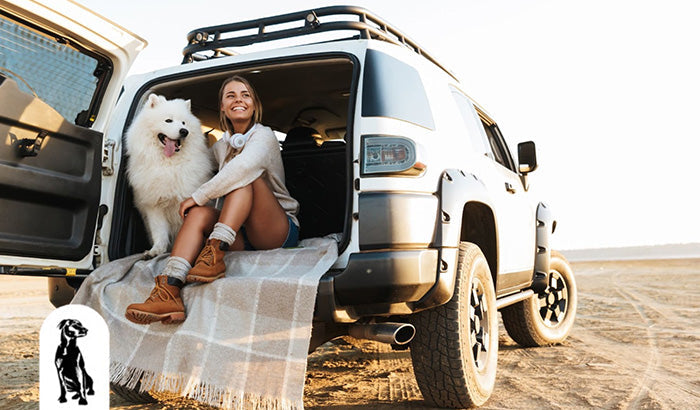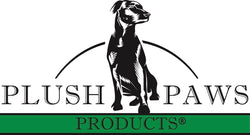
Safely transporting large dogs by car is essential for their comfort and the safety of all passengers. Larger breeds require special considerations due to their size and space needs, presenting unique challenges during travel.
In this guide, we explore effective solutions, including durable car seat covers, that ensure your large dog travels comfortably and securely. We will cover the best vehicles for large breeds, suitable safety equipment, and tips for preparing your dog for the journey. Understanding these key aspects makes car trips a positive experience for both you and your large companion, minimizing stress and maximizing safety.
Meeting your dog's needs
When planning a road trip with your large dog, it's crucial to recognize their need for ample space. Large breeds require enough room to stretch, lie down, and turn comfortably, ensuring their comfort throughout the journey. Make sure your vehicle accommodates these space needs to avoid discomfort or anxiety during the drive.
Moreover, scheduling regular stops during long trips is essential for your dog's exercise and bathroom needs. Plan to stop every couple of hours to allow your dog to stretch their legs and relieve themselves. These breaks help prevent restlessness and stress, maintain your dog's comfort and happiness on the road, and make the trip with your large dog enjoyable for everyone involved.
Choosing the right vehicle
When you need to transport large dogs, choosing the right vehicle is crucial for their comfort and safety. SUVs, minivans, and station wagons often top the list because of their spacious interiors that can accommodate large crates or provide ample room for your dog to stretch.
Focus on features that ensure comfort and safety when evaluating a vehicle for dog transport. Prioritize cars with climate control systems to maintain stable temperatures in both hot and cold weather.
Also, ensure the vehicle facilitates easy access for your dog, which is crucial for older or mobility-challenged dogs. Safety features like window locks and childproof door locks are essential to prevent your dog from accidentally opening them.
Lastly, opt for vehicles with flat-folding rear seats or low trunk entry points to simplify your dog’s entry and exit, enhancing comfort and safety.
Safety equipment
Securing large dogs during car travel requires choosing the right type of restraint. Each has distinct advantages and limitations, depending on your dog's size, temperament, and vehicle type.
Harnesses secure dogs to the vehicle via a seatbelt, allowing them to sit, stand, or lie down. They suit dogs that resist confinement, offering comfort and mobility. However, harnesses might not offer adequate protection in severe collisions.
Crates provide a secure and familiar environment for crate-trained dogs, effectively preventing injury by keeping the dog stable during accidents. The main drawback is their size; they require considerable space within the vehicle and can be cumbersome to install and remove.
Barriers fit well in SUVs and wagons, confining dogs to the cargo area and minimizing distractions to the driver. They allow dogs greater movement than crates and harnesses but offer minimal crash protection, serving primarily to keep dogs from the front seat.
Car seat covers protect upholstery from scratches, fur, dirt, and moisture, and provide a non-slip surface to prevent pets from sliding during rides, reducing the risk of injury. These covers also enhance comfort, especially beneficial for older pets, and simplify cleaning as they can be easily removed and washed.
Additionally, by defining a space for pets, these covers help minimize distractions to the driver, increasing safety for all occupants.
Selecting appropriate safety equipment is crucial for maintaining your dog's security and comfort during trips, ensuring you focus on the road.

Preparing for the journey
Prepare for a car trip with your large dog by carefully planning to ensure their comfort and reduce anxiety. Pack essential items such as enough water, food, portable dishes, and a few favorite toys to make the car feel more like home and keep your dog relaxed and entertained.
Before hitting the road, engage your dog in vigorous exercise. A long walk or a play session will help expend excess energy, encouraging your dog to rest during the drive and making the travel experience smoother for both of you.
Training your dog for car travel
Start training your dog to enjoy car rides by gradually introducing them to the vehicle. Encourage them to enter the car while it's parked, offering treats and praise to forge positive associations.
To reduce anxiety and prevent motion sickness, initiate travel with short drives, slowly extending the duration as your dog adjusts. Maintain good ventilation in the car and consider employing anxiety-reducing aids like calming sprays or their favorite blanket.
If your dog exhibits motion sickness, consult your vet for effective remedies. Practicing these strategies regularly will help your dog become a calm and happy traveler.
During the drive
Stay vigilant about your dog's comfort and safety throughout the journey. Continuously adjust the car's temperature to keep it pleasant and ensure your dog has easy access to fresh water and a cozy resting spot. Pay close attention to your dog’s behavior for any signs of stress or discomfort, such as whining, pacing, or restlessness.
If you notice your dog becoming anxious or unsettled, make an immediate stop to offer reassurance, provide a break, or adjust their position for better comfort.
Prepare yourself to tackle emergencies or unexpected issues swiftly and effectively. Always carry a comprehensive first aid kit designed for pets, stocked with essentials like bandages, antiseptics, and any necessary medications. Familiarize yourself with basic pet first aid procedures to respond confidently in critical moments.
Additionally, keep a list of important contacts, including your veterinarian and nearby animal hospitals, that are easily accessible. In the event of a sudden health concern or accident, knowing how to act quickly can make a significant difference in your dog's well-being and ensure a safer, more enjoyable trip for both of you.
Legal considerations
It's essential to research and understand the laws and regulations governing pet transport in your state and any states you'll be traveling through. Different states have specific requirements for securing pets in vehicles, and compliance is crucial to avoid penalties.
Ensure you're familiar with these rules before you set out on a journey with your large dog to ensure a smooth, lawful trip.
Reviewing your vehicle insurance policy is crucial when traveling with a large dog. Check whether your insurance covers incidents involving pets and understand any limitations or exclusions.
Discuss potential changes or additional coverage with your insurance provider to ensure that you are fully protected against liabilities that may arise from transporting your large dog. Taking these steps not only secures your financial protection but also prepares you legally for any incidents on the road.
Special considerations for long-distance travel
When you plan long-distance trips with a large dog, be sure to identify and arrange your overnight stops ahead of time. Select locations that offer safety and convenience, ensuring spaces where your dog can exercise, stretch, and relieve itself. Effective planning of these stops reduces stress and keeps your trip on schedule.
Secure pet-friendly accommodations to ensure a smooth journey with your large dog. Research and compile a list of hotels or motels that welcome pets, utilizing websites and apps dedicated to pet travel. These resources help you find establishments that allow pets and provide special amenities like walking areas and pet treats.
Booking these places in advance ensures you and your dog have a welcoming spot to rest each night.

Protect your pup with Plush Paws
Plush Paws offers a range of high-quality travel accessories designed specifically for large breeds. With durable car seat covers that protect your vehicle's interior, Plush Paws helps make every journey stress-free. Trust Plush Paws to provide the ultimate comfort and safety solutions, allowing you and your furry friend to enjoy every trip to the fullest.
Explore our pet care products today and experience peace of mind while on the road with your canine companion.